14 - 18 November 2022
Artemis signals the beginning of new space, and they’re not alone
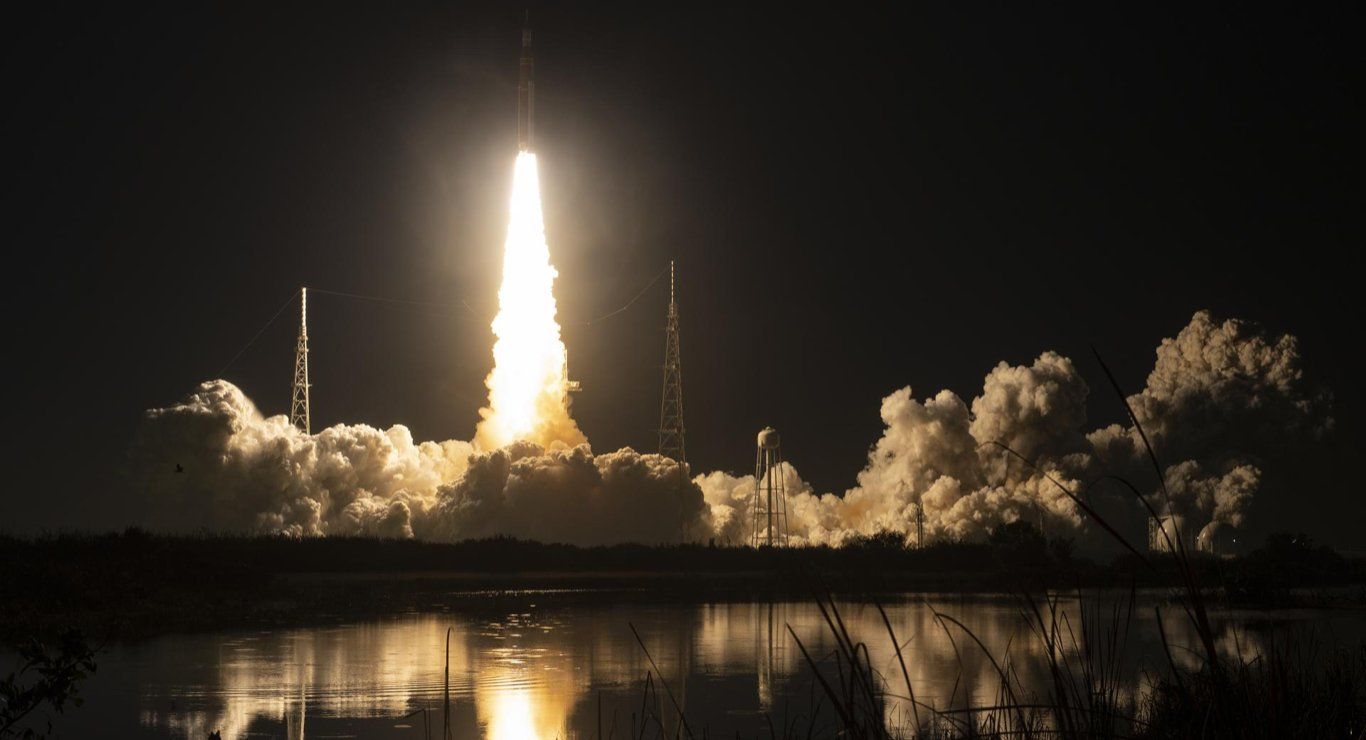
Successful launch for Artemis-1 on the 16th November (Image: NASA/Keegan Barber)
Artemis-1 took off on Wednesday morning, marking the beginning of humankind’s return to the moon. Returning astronauts to the lunar surface for the first time in over 50 years will be symbolic of New Space, our quest for deep space exploration, and moreover, utilising space resources in order to benefit humankind and our planet. The Artemis project is one of the great chapters in this story, but it also comes at a time when numerous other missions are underway, supporting humankind’s achievements in space.
NASA stole the headlines this week, but there has been yet more developments supporting the growth of a new ecosystem in earth orbit. LEO is quickly becoming a busy place, and is set to carry on this growth. Furthermore, private launch companies are continuing to cement their place as the vessel of choice into LEO and beyond, increasing competition and efficiency, and driving down costs.
Within the same month, we will likely witness the launch of the first commercial mission to the surface of the moon with Japanese company iSpace. Whilst this will be a turning point for the commercialisation of space, it once again raises questions about the legality of resource extraction, territorial appropriation and the urgent need for updated rules to govern a peaceful future in outer space.
A growing ecosystem in Earth orbit
“An industrial revolution is underway 250 miles above our heads” is what Sierra Space chief, Tom Vice, said last month. We can see the boom in the space industry, and at this stage it is largely due to the ever-increasing demand for satellite technology, and the infrastructure that will be attached it. With thousands more satellites entering orbit comes the need to efficiently manage space traffic, remove debris, provide logistical services and orbital transfers, servicing and refuelling of vehicles and on-orbit manufacture.
This week Apple have announced that they will extend their SOS via satellite services (for the upcoming iPhone 14) to some European nations, with other network providers and satellite companies set to follow suit. With the potential to pass this tech onto billions of smartphone users, this could seriously impact the growth of satellite constellations in orbit. One company trying to meet the increasing demand for satellites and orbital vehicles is Benchmark Space, who have almost tripled their staff and expanded facilities in the US and UK to produce as many as 1,000 engines and propulsion systems.
The use of Earth orbit also continues to diversify, this week with Thales Alenia (France) leading a European feasibility study into placing data storage centres in space. This could have remarkable benefits in regards to energy consumption and climate change. Orbital data stores could harness clean solar energy, and help in the fight towards European carbon-neutrality by 2050. It’s also been revealed that Uganda’s first satellite, latched last week, will be used for a demonstration of on-orbit 3D printing human tissue. Bio-printing human organs on Earth is difficult to due to gravitational pull, but could be better achieved in space.
With the benefits of Earth orbit being utilised, there is urgent need to effectively manage and service this new ecosystem, and Chinese space-mining start-up launched their robotic platform at the Chinese Airshow earlier this month. The NE0-1, from Origin Space Technology Co, claims to be the first Chinese company aiming at utilising space resources, as well as removing space debris. Chinese media outlet Global Times reports that a demonstration used a large net to capture space debris, and was originally launched back in April, 2021. With reports of up to 50,000 satellites being in-orbit in the near future, debris removal and traffic management is urgently required, and will be a growth industry.
Kayhan Space (US) and Morpheus Space (Germany) have announced a strategic partnership to offer collision avoidance services, by together utilising their space traffic management software and “pay-as -you-go” propulsion technologies, respectively. Extending the lifespan of satellites could also be key to reducing the amount of space junk, and this week Swiss orbital debris removal startup have announced a project to work with Intelsat, in order to service one of their satellites before its fuel runs out, somewhere between 2026-28.
In-orbit transportation will be another key element of this growing ecosystem, and this week the ESA have announced plans to demonstrate their “Space Ryder”, a reusable vehicle used to transport payloads for different purposes. The vehicle is designed to be returned to Earth, refitted and then reused several times. First flight is planned for 2024. The ESA is also focussed on the prospect of a space transport ecosystem, and has this week “…set in motion the development of a comprehensive space logistics capability” (ESA). They compare this new ecosystem to what already exists on Earth, stating “…(on Earth) everything we buy and consume, and every trip we make, depends on a global transportation network connecting trucks, ships, aircraft, warehouses supported by fuel systems, m
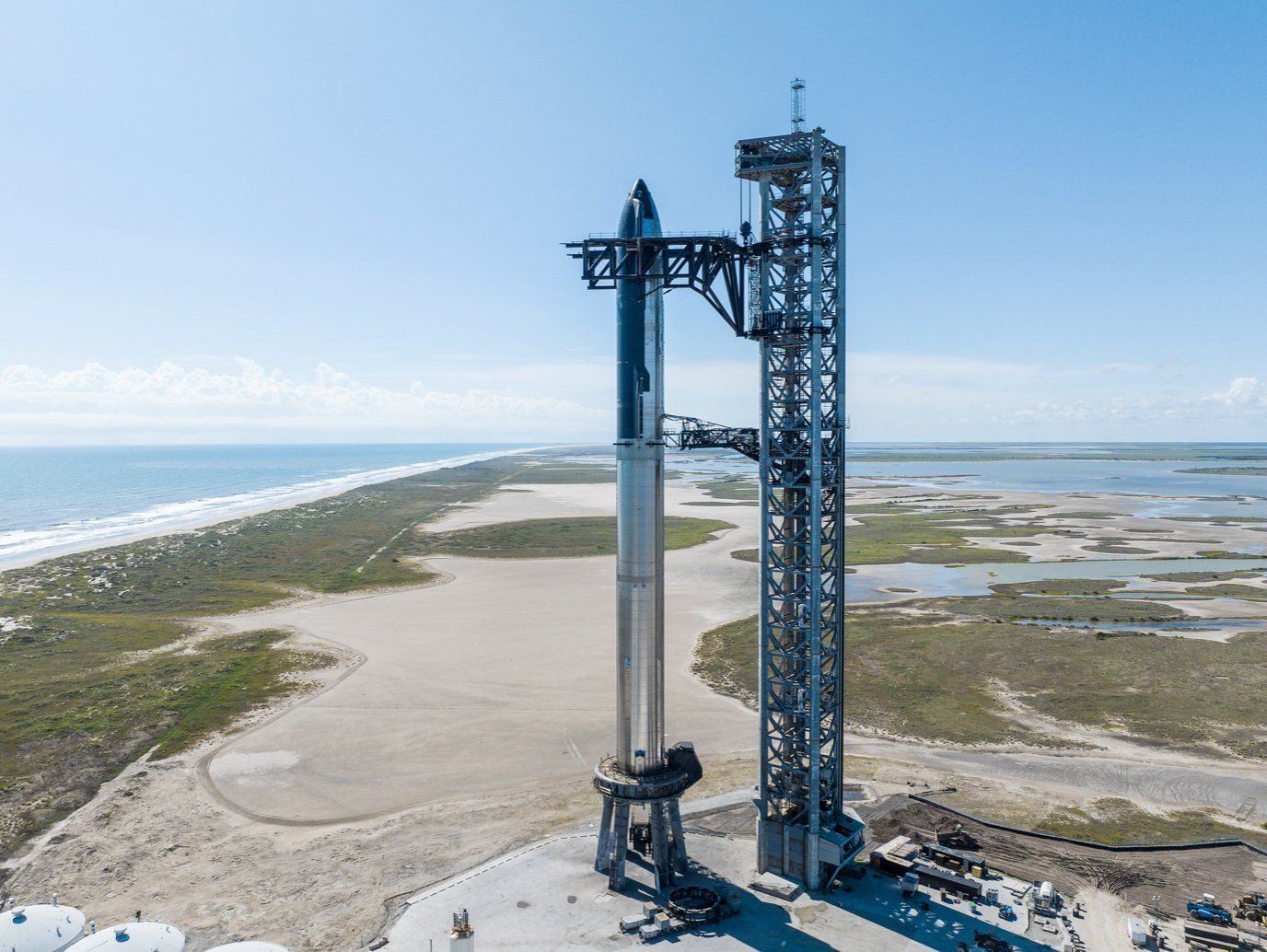
Starship could launch this year (Image: SpaceX)
Artemis leads the way in an increasingly competitive launch market?
The launch of Artemis-1 represents humankind’s return to the moon, and deeper interest in the possibilities of outer space. After successful separation of the booster and core stages of the SLS rocket, the Orion spacecraft was propelled into lunar trajectory, and will embark on a 25-day mission, going father than any human-proof spacecraft has ever gone before. On the 11th December, we will hopefully see a successful splashdown, and positive tests of its ability to take human beings on the next Artemis-2 mission, planned no sooner than 2024.
Standing in the queue behind Artemis-1 is the eagerly awaited Starship, with SpaceX this week carrying out static-fire testing of Booster 7, its first stage. There still remains a good possibility that Starship could be launched on its first orbital flight this year, which be significant milestone for new space and commercial innovation. SpaceX have also signed a contract with NASA to supply an upgraded version of their Starship lunar lander, and a second crewed mission, as part of the Artemis programme. The role of Starship, and the expectations being put on it, seemingly cannot be understated.
Other significant developments in commercial launch have perhaps been overlooked this week, due to the Artemis launch. ABL Space Systems (US) will be looking carry out the maiden launch of its RS1 rocket this week. Aiming to place themselves in a niche in the small-sat launch market. Their rockets are designed to be quickly deployable, and so perhaps could also be called-upon for responsive launch demonstrations also. Another company working on rapid launch capabilities is Virgin Orbit, who this week received positive news in that spaceport Cornwall, UK, received a launch license, which now paves the way for Virgin’s maiden launch, and the first ever satellite launch from European soil. Additionally, Indian launch company Skyroot successfully carried out India’s first ever commercial rocket launch, paving the way for their growing private sector.
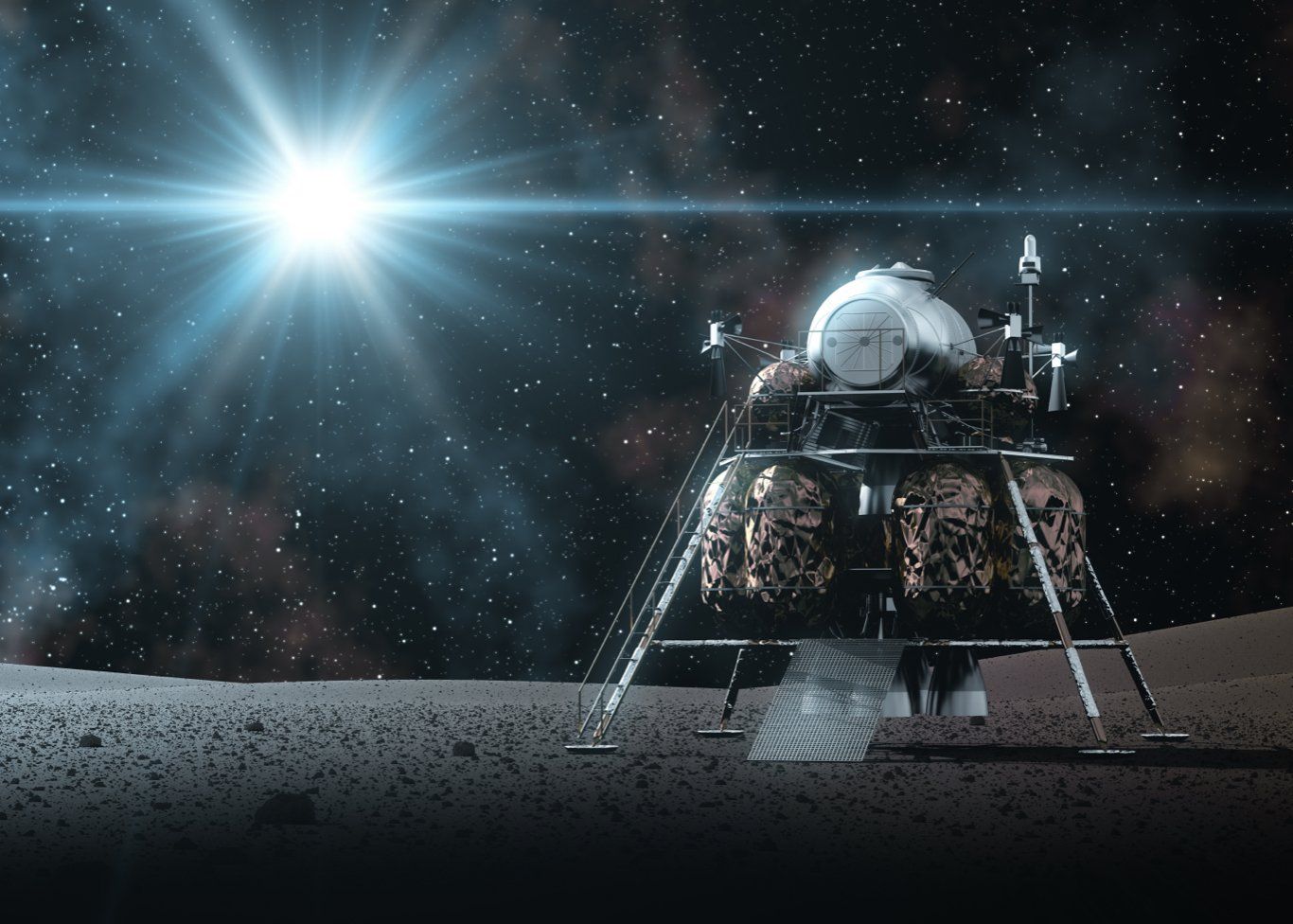
A race for first commercial lunar lander mission (Image: Adobe)
Race to the moon and the need for regulation
Whilst there’s a new space race opening up between the leading space nations of the US and China, it can also be said that there is a race within the private sector. Japanese company iSpace have announced a new launch date of the 28th November, which will send their lander to the moon, launched on a Falcon-9. They will be aiming to become the first commercial company to land on, and carry out business, on the lunar surface. They will also be carrying lunar rovers for the UAE and Japan. Their success will be a curtain-raiser for more private entities looking to explore the moon.
However, they aren’t alone in this quest. Intuitive Machines (US) will also be looking to send their lander within the first quarter of 2023, as well as Pittsburg-based Astrobotic. Whilst iSpace are heading-off first, they will take a longer trajectory, using the gravitational pull of the Earth and Sun, in order to save fuel and increase payload capacity. Intuitive Machines will be taking a much shorter journey, and so this could mean they both arrive at similar times. Similarly, Astrobotic have announced that their Peregrine Lander is now on its way to ULA facilities, preparing for its Vulcan rocket launch in the first quarter of 2023.
Whilst this commercial race unfolds, there has, perhaps, already been a winner of sorts. NASA’s CAPSTONE lunar satellite successfully arrived in its cislunar orbit this week, after starting its journey with Rocket Lab back in June. The success of future lunar exploration hinges very much on this understated mission. CAPSTONE will spend its time analysing the lunar orbit, effectively paving the way for the future lunar gateway, key to the long-term success of the Artemis programme. Similarly, Korea’s Danuri lunar orbiter, has this week successfully sent back data to Earth using a “space based internet”, an interplanetary internet connection. The mission continues on its ultimate goal of monitoring the lunar surface for ice, uranium, helium-3, silicon, and aluminium.
All of these achievements can be largely be affiliated with the success of the private sector, without which much of the innovation we are witnessing at the moment, may not exist. Far-off goals, such as resource utilisation, are quickly becoming a reality. However, issues still need to be addressed in relation to the legality of such activities. The UN Outer Space Treaty (OST) clearly states that territory on places such as the moon can bot be appropriated. But does this also count for resources? Speaking to the Deutsche Welle, Kai-Uwe Schrogl, president of the International Institute of Space Law, said the Outer Space Treaty claims that no one can own materials taken from the moon. "There are no loopholes. There are just wilfully wrong interpretations of the Outer Space Treaty” (DW). However, one group who are creating such an interpretation is the Artemis Accords. Similarly, as we highlighted earlier, Chinese companies are also preparing the extract celestial resources, and claim their actions in space are based on the OST.
There is a clear need to either update existing law, or create new ones, which are globally recognised. With the inevitability of celestial mining, how can resources also be for the benefit of all humankind (also outlined in the OST), and not swallowed up by the few? There has been a proposal from the University of Nottingham, a UK subsidiary based in China. Their paper analyses the impact that asteroid mining will have on different entities, making comparison between spacefaring nations and others, and concluded, that without regulation, the equity gap could grow exponentially. In short, their proposal is for an update of the OST in order to distribute resources carefully, and avoid such an outcome.
This proposal could work, but there is also scepticism about the willingness of nations, especially the US and China, to reopen this legislation. It was written over 50 years ago, when the realisation of things such as asteroid mining were far more distant. The US will be content working by their Artemis Accords, and China are attracting cooperation through their new space station, and lunar station (ILRS) programme. Furthermore, current geopolitical tensions make it more difficult for such issues to be addressed.
Nonetheless, there must a concerted effort to address these issues, and it will be no easy task. But humankind does have the talent and determination to do so. This month we have and will see the beginning of commercialisation and permanent habitation of the moon. Let this inspire us in our mission to make space a success for all humankind.
External Links
This Week
*News articles posted here are not property of ANASDA GmbH and belong to their respected owners. Postings here are external links only.
Our future in space
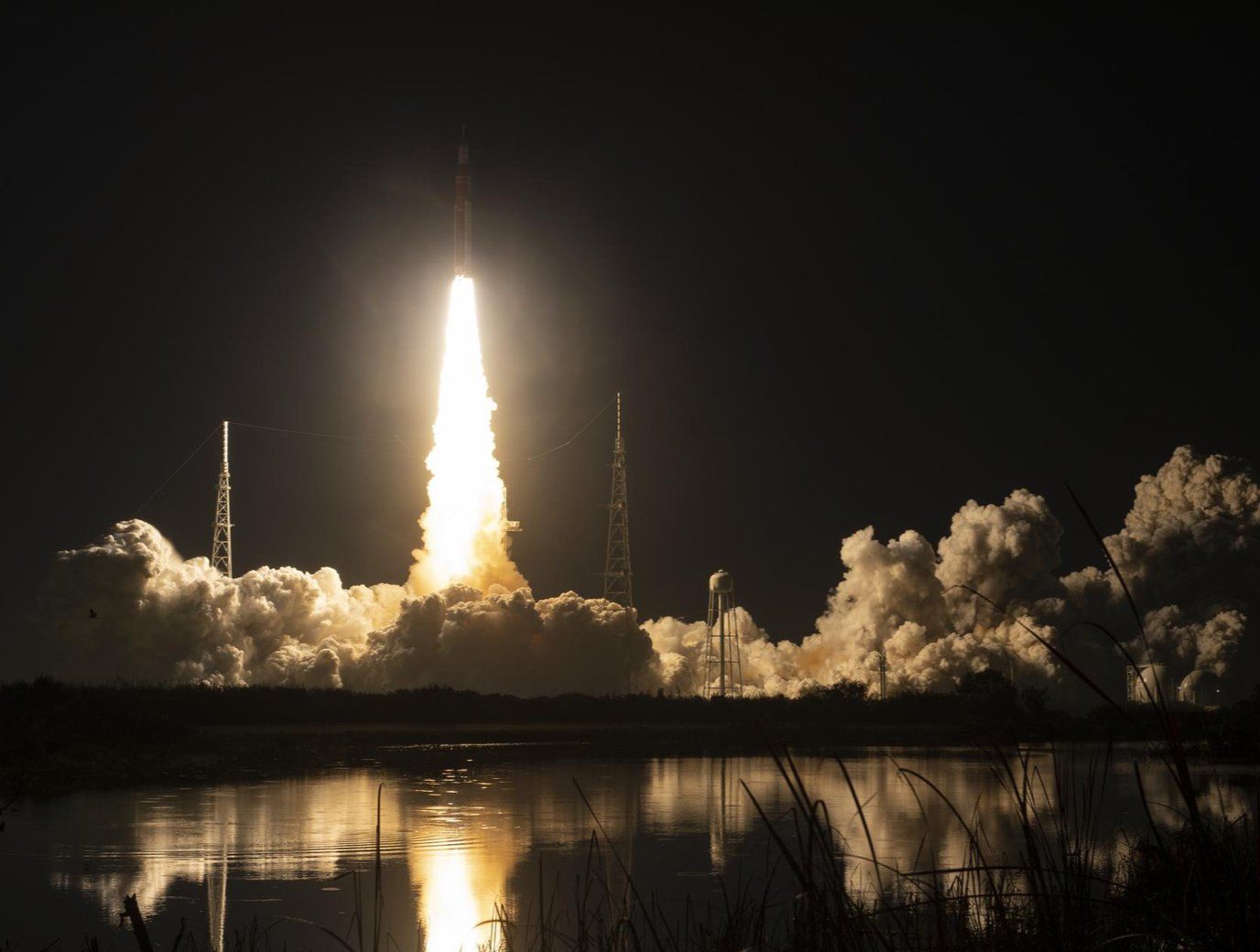
Successful launch for Artemis-1 on the 16th November (Image: NASA/Keegan Barber)
14 - 18 November 2022
Artemis signals the beginning of new space, and they’re not alone
Artemis-1 took off on Wednesday morning, marking the beginning of humankind’s return to the moon. Returning astronauts to the lunar surface for the first time in over 50 years will be symbolic of New Space, our quest for deep space exploration, and moreover, utilising space resources in order to benefit humankind and our planet. The Artemis project is one of the great chapters in this story, but it also comes at a time when numerous other missions are underway, supporting humankind’s achievements in space.
NASA stole the headlines this week, but there has been yet more developments supporting the growth of a new ecosystem in earth orbit. LEO is quickly becoming a busy place, and is set to carry on this growth. Furthermore, private launch companies are continuing to cement their place as the vessel of choice into LEO and beyond, increasing competition and efficiency, and driving down costs.
Within the same month, we will likely witness the launch of the first commercial mission to the surface of the moon with Japanese company iSpace. Whilst this will be a turning point for the commercialisation of space, it once again raises questions about the legality of resource extraction, territorial appropriation and the urgent need for updated rules to govern a peaceful future in outer space.
A growing ecosystem in Earth orbit
“An industrial revolution is underway 250 miles above our heads” is what Sierra Space chief, Tom Vice, said last month. We can see the boom in the space industry, and at this stage it is largely due to the ever-increasing demand for satellite technology, and the infrastructure that will be attached it. With thousands more satellites entering orbit comes the need to efficiently manage space traffic, remove debris, provide logistical services and orbital transfers, servicing and refuelling of vehicles and on-orbit manufacture.
This week Apple have announced that they will extend their SOS via satellite services (for the upcoming iPhone 14) to some European nations, with other network providers and satellite companies set to follow suit. With the potential to pass this tech onto billions of smartphone users, this could seriously impact the growth of satellite constellations in orbit. One company trying to meet the increasing demand for satellites and orbital vehicles is Benchmark Space, who have almost tripled their staff and expanded facilities in the US and UK to produce as many as 1,000 engines and propulsion systems.
The use of Earth orbit also continues to diversify, this week with Thales Alenia (France) leading a European feasibility study into placing data storage centres in space. This could have remarkable benefits in regards to energy consumption and climate change. Orbital data stores could harness clean solar energy, and help in the fight towards European carbon-neutrality by 2050. It’s also been revealed that Uganda’s first satellite, latched last week, will be used for a demonstration of on-orbit 3D printing human tissue. Bio-printing human organs on Earth is difficult to due to gravitational pull, but could be better achieved in space.
With the benefits of Earth orbit being utilised, there is urgent need to effectively manage and service this new ecosystem, and Chinese space-mining start-up launched their robotic platform at the Chinese Airshow earlier this month. The NE0-1, from Origin Space Technology Co, claims to be the first Chinese company aiming at utilising space resources, as well as removing space debris. Chinese media outlet Global Times reports that a demonstration used a large net to capture space debris, and was originally launched back in April, 2021. With reports of up to 50,000 satellites being in-orbit in the near future, debris removal and traffic management is urgently required, and will be a growth industry.
Kayhan Space (US) and Morpheus Space (Germany) have announced a strategic partnership to offer collision avoidance services, by together utilising their space traffic management software and “pay-as -you-go” propulsion technologies, respectively. Extending the lifespan of satellites could also be key to reducing the amount of space junk, and this week Swiss orbital debris removal startup have announced a project to work with Intelsat, in order to service one of their satellites before its fuel runs out, somewhere between 2026-28.
In-orbit transportation will be another key element of this growing ecosystem, and this week the ESA have announced plans to demonstrate their “Space Ryder”, a reusable vehicle used to transport payloads for different purposes. The vehicle is designed to be returned to Earth, refitted and then reused several times. First flight is planned for 2024. The ESA is also focussed on the prospect of a space transport ecosystem, and has this week “…set in motion the development of a comprehensive space logistics capability” (ESA). They compare this new ecosystem to what already exists on Earth, stating “…(on Earth) everything we buy and consume, and every trip we make, depends on a global transportation network connecting trucks, ships, aircraft, warehouses supported by fuel systems, maintenance services and communications. The same will be soon true in space” (ESA).
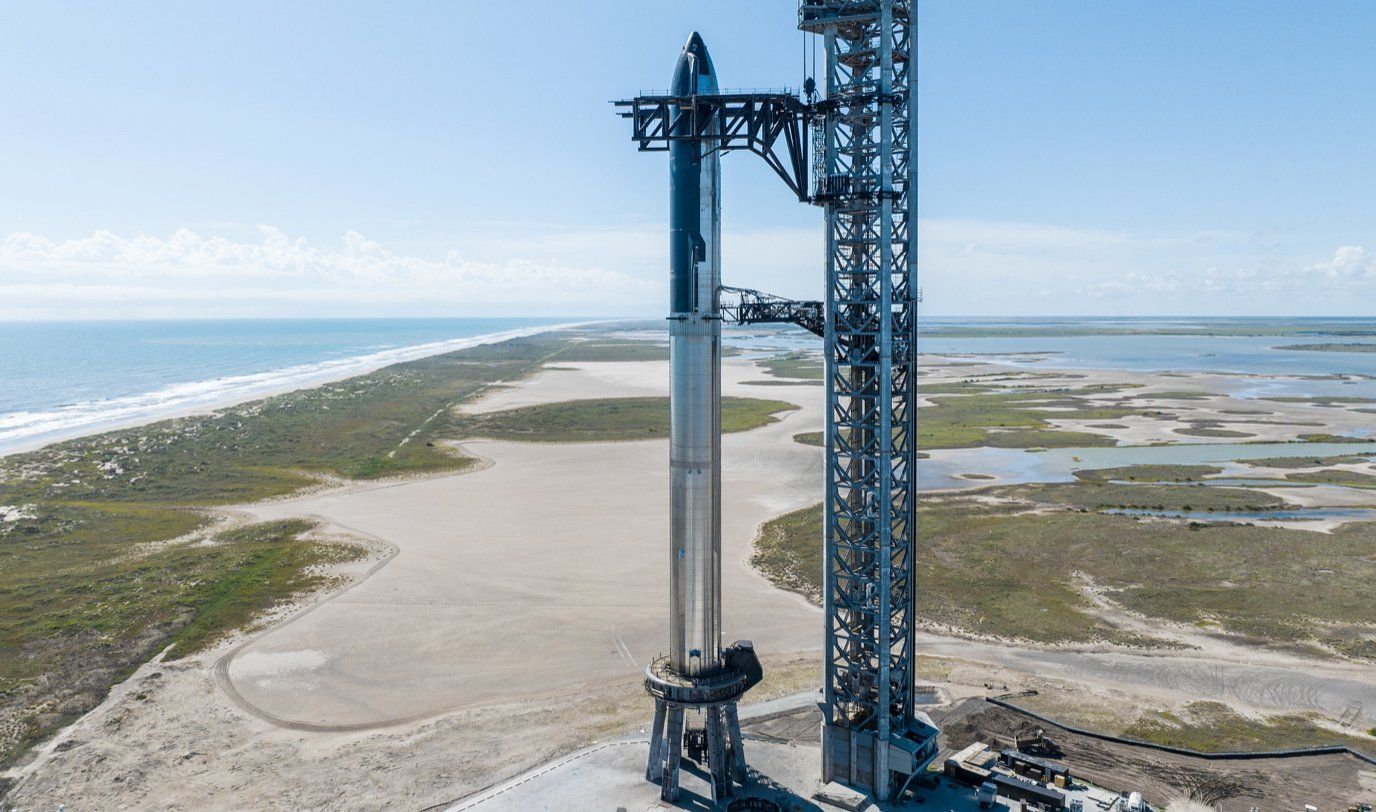
Starship could launch this year (Image: SpaceX)
Artemis leads the way in an increasingly competitive launch market?
The launch of Artemis-1 represents humankind’s return to the moon, and deeper interest in the possibilities of outer space. After successful separation of the booster and core stages of the SLS rocket, the Orion spacecraft was propelled into lunar trajectory, and will embark on a 25-day mission, going father than any human-proof spacecraft has ever gone before. On the 11th December, we will hopefully see a successful splashdown, and positive tests of its ability to take human beings on the next
Standing in the queue behind Artemis-1 is the eagerly awaited Starship, with SpaceX this week carrying out static-fire testing of Booster 7, its first stage. There still remains a good possibility that Starship could be launched on its first orbital flight this year, which be significant milestone for new space and commercial innovation. SpaceX have also signed a contract with NASA to supply an upgraded version of their Starship lunar lander, and a second crewed mission, as part of the Artemis programme. The role of Starship, and the expectations being put on it, seemingly cannot be understated.
Other significant developments in commercial launch have perhaps been overlooked this week, due to the Artemis launch. ABL Space Systems (US) will be looking carry out the maiden launch of its RS1 rocket this week. Aiming to place themselves in a niche in the small-sat launch market. Their rockets are designed to be quickly deployable, and so perhaps could also be called-upon for responsive launch demonstrations also. Another company working on rapid launch capabilities is Virgin Orbit, who this week received positive news in that spaceport Cornwall, UK, received a launch license, which now paves the way for Virgin’s maiden launch, and the first ever satellite launch from European soil. Additionally, Indian launch company Skyroot successfully carried out India’s first ever commercial rocket launch, paving the way for their growing private sector.
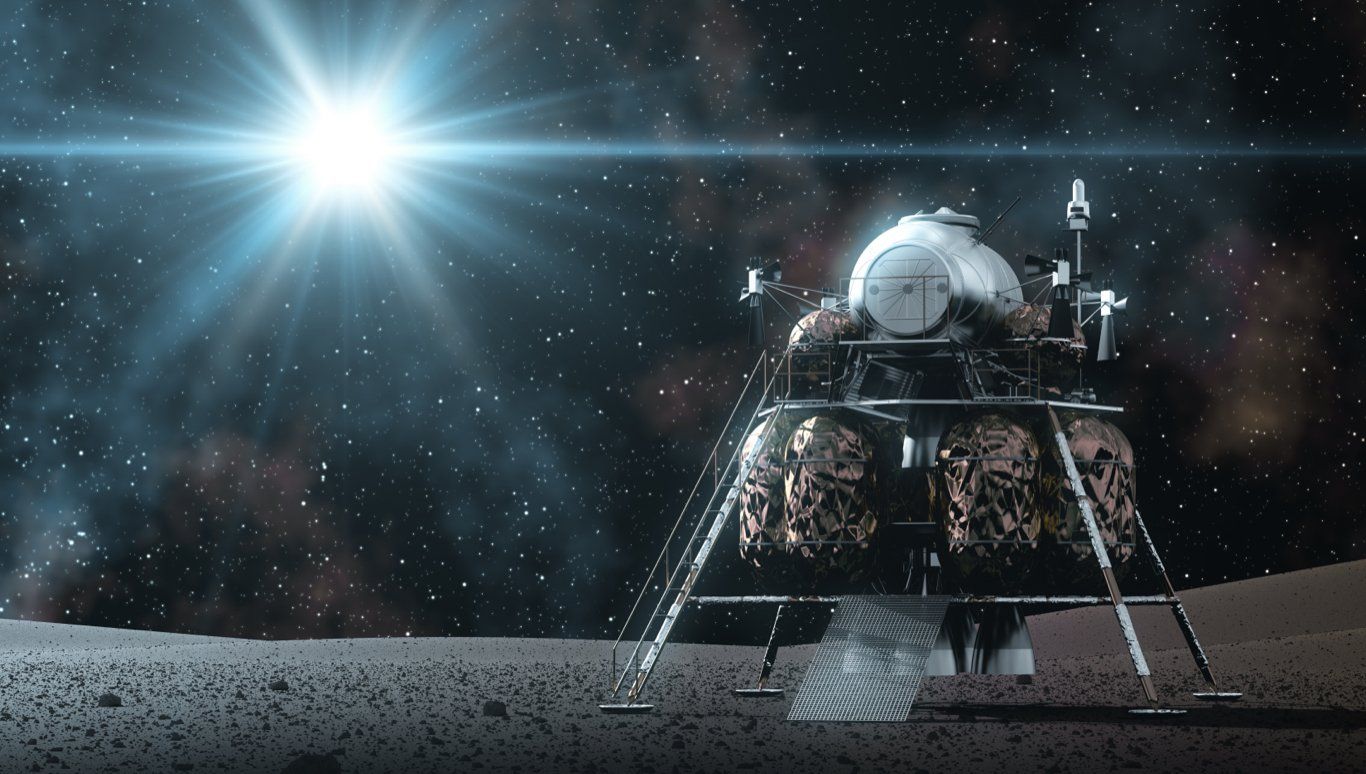
Starship could launch this year (Image: SpaceX)
Race to the moon and the need for regulation
Whilst there’s a new space race opening up between the leading space nations of the US and China, it can also be said that there is a race within the private sector. Japanese company iSpace have announced a new launch date of the 28th November, which will send their lander to the moon, launched on a Falcon-9. They will be aiming to become the first commercial company to land on, and carry out business, on the lunar surface. They will also be carrying lunar rovers for the UAE and Japan. Their success will be a curtain-raiser for more private entities looking to explore the moon.
However, they aren’t alone in this quest. Intuitive Machines (US) will also be looking to send their lander within the first quarter of 2023, as well as Pittsburg-based Astrobotic. Whilst iSpace are heading-off first, they will take a longer trajectory, using the gravitational pull of the Earth and Sun, in order to save fuel and increase payload capacity. Intuitive Machines will be taking a much shorter journey, and so this could mean they both arrive at similar times. Similarly, Astrobotic have announced that their Peregrine Lander is now on its way to ULA facilities, preparing for its Vulcan rocket launch in the first quarter of 2023.
Whilst this commercial race unfolds, there has, perhaps, already been a winner of sorts. NASA’s CAPSTONE lunar satellite successfully arrived in its cislunar orbit this week, after starting its journey with Rocket Lab back in June. The success of future lunar exploration hinges very much on this understated mission. CAPSTONE will spend its time analysing the lunar orbit, effectively paving the way for the future lunar gateway, key to the long-term success of the Artemis programme. Similarly, Korea’s Danuri lunar orbiter, has this week successfully sent back data to Earth using a “space based internet”, an interplanetary internet connection. The mission continues on its ultimate goal of monitoring the lunar surface for ice, uranium, helium-3, silicon, and aluminium.
All of these achievements can be largely be affiliated with the success of the private sector, without which much of the innovation we are witnessing at the moment, may not exist. Far-off goals, such as resource utilisation, are quickly becoming a reality. However, issues still need to be addressed in relation to the legality of such activities. The UN Outer Space Treaty (OST) clearly states that territory on places such as the moon can bot be appropriated. But does this also count for resources? Speaking to the Deutsche Welle, Kai-Uwe Schrogl, president of the International Institute of Space Law, said the Outer Space Treaty claims that no one can own materials taken from the moon. "There are no loopholes. There are just wilfully wrong interpretations of the Outer Space Treaty” (DW). However, one group who are creating such an interpretation is the Artemis Accords. Similarly, as we highlighted earlier, Chinese companies are also preparing the extract celestial resources, and claim their actions in space are based on the OST.
There is a clear need to either update existing law, or create new ones, which are globally recognised. With the inevitability of celestial mining, how can resources also be for the benefit of all humankind (also outlined in the OST), and not swallowed up by the few? There has been a proposal from the University of Nottingham, a UK subsidiary based in China. Their paper analyses the impact that asteroid mining will have on different entities, making comparison between spacefaring nations and others, and concluded, that without regulation, the equity gap could grow exponentially. In short, their proposal is for an update of the OST in order to distribute resources carefully, and avoid such an outcome.
This proposal could work, but there is also scepticism about the willingness of nations, especially the US and China, to reopen this legislation. It was written over 50 years ago, when the realisation of things such as asteroid mining were far more distant. The US will be content working by their Artemis Accords, and China are attracting cooperation through their new space station, and lunar station (ILRS) programme. Furthermore, current geopolitical tensions make it more difficult for such issues to be addressed.
Nonetheless, there must a concerted effort to address these issues, and it will be no easy task. But humankind does have the talent and determination to do so. This month we have and will see the beginning of commercialisation and permanent habitation of the moon. Let this inspire us in our mission to make space a success for all humankind.
Share this article
External Links
This Week
*News articles posted here are not property of ANASDA GmbH and belong to their respected owners. Postings here are external links only.
14 - 18 Nov 2022
Artemis signals the beginning of new space, and they’re not alone

Successful launch for Artemis-1 on the 16th November (Image: NASA/Keegan Barber)
Artemis-1 took off on Wednesday morning, marking the beginning of humankind’s return to the moon. Returning astronauts to the lunar surface for the first time in over 50 years will be symbolic of New Space, our quest for deep space exploration, and moreover, utilising space resources in order to benefit humankind and our planet. The Artemis project is one of the great chapters in this story, but it also comes at a time when numerous other missions are underway, supporting humankind’s achievements in space.
NASA stole the headlines this week, but there has been yet more developments supporting the growth of a new ecosystem in earth orbit. LEO is quickly becoming a busy place, and is set to carry on this growth. Furthermore, private launch companies are continuing to cement their place as the vessel of choice into LEO and beyond, increasing competition and efficiency, and driving down costs.
Within the same month, we will likely witness the launch of the first commercial mission to the surface of the moon with Japanese company iSpace. Whilst this will be a turning point for the commercialisation of space, it once again raises questions about the legality of resource extraction, territorial appropriation and the urgent need for updated rules to govern a peaceful future in outer space.
A growing ecosystem in Earth orbit
“An industrial revolution is underway 250 miles above our heads” is what Sierra Space chief, Tom Vice, said last month. We can see the boom in the space industry, and at this stage it is largely due to the ever-increasing demand for satellite technology, and the infrastructure that will be attached it. With thousands more satellites entering orbit comes the need to efficiently manage space traffic, remove debris, provide logistical services and orbital transfers, servicing and refuelling of vehicles and on-orbit manufacture.
This week Apple have announced that they will extend their SOS via satellite services (for the upcoming iPhone 14) to some European nations, with other network providers and satellite companies set to follow suit. With the potential to pass this tech onto billions of smartphone users, this could seriously impact the growth of satellite constellations in orbit. One company trying to meet the increasing demand for satellites and orbital vehicles is Benchmark Space, who have almost tripled their staff and expanded facilities in the US and UK to produce as many as 1,000 engines and propulsion systems.
The use of Earth orbit also continues to diversify, this week with Thales Alenia (France) leading a European feasibility study into placing data storage centres in space. This could have remarkable benefits in regards to energy consumption and climate change. Orbital data stores could harness clean solar energy, and help in the fight towards European carbon-neutrality by 2050. It’s also been revealed that Uganda’s first satellite, latched last week, will be used for a demonstration of on-orbit 3D printing human tissue. Bio-printing human organs on Earth is difficult to due to gravitational pull, but could be better achieved in space.
With the benefits of Earth orbit being utilised, there is urgent need to effectively manage and service this new ecosystem, and Chinese space-mining start-up launched their robotic platform at the Chinese Airshow earlier this month. The NE0-1, from Origin Space Technology Co, claims to be the first Chinese company aiming at utilising space resources, as well as removing space debris. Chinese media outlet Global Times reports that a demonstration used a large net to capture space debris, and was originally launched back in April, 2021. With reports of up to 50,000 satellites being in-orbit in the near future, debris removal and traffic management is urgently required, and will be a growth industry.
Kayhan Space (US) and Morpheus Space (Germany) have announced a strategic partnership to offer collision avoidance services, by together utilising their space traffic management software and “pay-as -you-go” propulsion technologies, respectively. Extending the lifespan of satellites could also be key to reducing the amount of space junk, and this week Swiss orbital debris removal startup have announced a project to work with Intelsat, in order to service one of their satellites before its fuel runs out, somewhere between 2026-28.
In-orbit transportation will be another key element of this growing ecosystem, and this week the ESA have announced plans to demonstrate their “Space Ryder”, a reusable vehicle used to transport payloads for different purposes. The vehicle is designed to be returned to Earth, refitted and then reused several times. First flight is planned for 2024. The ESA is also focussed on the prospect of a space transport ecosystem, and has this week “…set in motion the development of a comprehensive space logistics capability” (ESA). They compare this new ecosystem to what already exists on Earth, stating “…(on Earth) everything we buy and consume, and every trip we make, depends on a global transportation network connecting trucks, ships, aircraft, warehouses supported by fuel systems, maintenance services and communications. The same will be soon true in space” (ESA).

Starship could launch this year (Image: SpaceX)
Artemis leads the way in an increasingly competitive launch market?
The launch of Artemis-1 represents humankind’s return to the moon, and deeper interest in the possibilities of outer space. After successful separation of the booster and core stages of the SLS rocket, the Orion spacecraft was propelled into lunar trajectory, and will embark on a 25-day mission, going father than any human-proof spacecraft has ever gone before. On the 11th December, we will hopefully see a successful splashdown, and positive tests of its ability to take human beings on the next Artemis-2 mission, planned no sooner than 2024.
Standing in the queue behind Artemis-1 is the eagerly awaited Starship, with SpaceX this week carrying out static-fire testing of Booster 7, its first stage. There still remains a good possibility that Starship could be launched on its first orbital flight this year, which be significant milestone for new space and commercial innovation. SpaceX have also signed a contract with NASA to supply an upgraded version of their Starship lunar lander, and a second crewed mission, as part of the Artemis programme. The role of Starship, and the expectations being put on it, seemingly cannot be understated.
Other significant developments in commercial launch have perhaps been overlooked this week, due to the Artemis launch. ABL Space Systems (US) will be looking carry out the maiden launch of its RS1 rocket this week. Aiming to place themselves in a niche in the small-sat launch market. Their rockets are designed to be quickly deployable, and so perhaps could also be called-upon for responsive launch demonstrations also. Another company working on rapid launch capabilities is Virgin Orbit, who this week received positive news in that spaceport Cornwall, UK, received a launch license, which now paves the way for Virgin’s maiden launch, and the first ever satellite launch from European soil. Additionally, Indian launch company Skyroot successfully carried out India’s first ever commercial rocket launch, paving the way for their growing private sector.
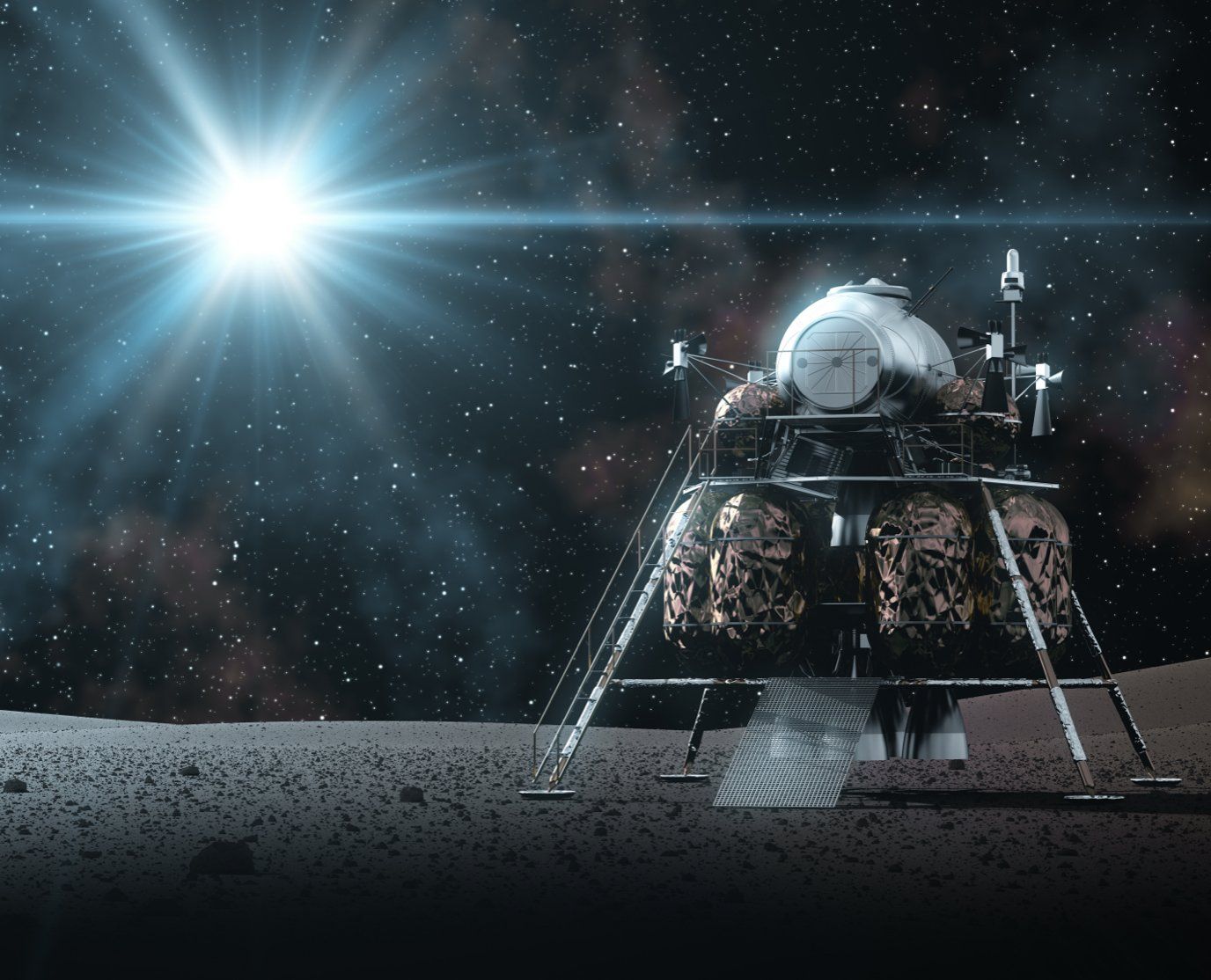
A race for first commercial lunar lander mission (Image: Adobe)
Race to the moon and the need for regulation
Whilst there’s a new space race opening up between the leading space nations of the US and China, it can also be said that there is a race within the private sector. Japanese company iSpace have announced a new launch date of the 28th November, which will send their lander to the moon, launched on a Falcon-9. They will be aiming to become the first commercial company to land on, and carry out business, on the lunar surface. They will also be carrying lunar rovers for the UAE and Japan. Their success will be a curtain-raiser for more private entities looking to explore the moon.
However, they aren’t alone in this quest. Intuitive Machines (US) will also be looking to send their lander within the first quarter of 2023, as well as Pittsburg-based Astrobotic. Whilst iSpace are heading-off first, they will take a longer trajectory, using the gravitational pull of the Earth and Sun, in order to save fuel and increase payload capacity. Intuitive Machines will be taking a much shorter journey, and so this could mean they both arrive at similar times. Similarly, Astrobotic have announced that their Peregrine Lander is now on its way to ULA facilities, preparing for its Vulcan rocket launch in the first quarter of 2023.
Whilst this commercial race unfolds, there has, perhaps, already been a winner of sorts. NASA’s CAPSTONE lunar satellite successfully arrived in its cislunar orbit this week, after starting its journey with Rocket Lab back in June. The success of future lunar exploration hinges very much on this understated mission. CAPSTONE will spend its time analysing the lunar orbit, effectively paving the way for the future lunar gateway, key to the long-term success of the Artemis programme. Similarly, Korea’s Danuri lunar orbiter, has this week successfully sent back data to Earth using a “space based internet”, an interplanetary internet connection. The mission continues on its ultimate goal of monitoring the lunar surface for ice, uranium, helium-3, silicon, and aluminium.
All of these achievements can be largely be affiliated with the success of the private sector, without which much of the innovation we are witnessing at the moment, may not exist. Far-off goals, such as resource utilisation, are quickly becoming a reality. However, issues still need to be addressed in relation to the legality of such activities. The UN Outer Space Treaty (OST) clearly states that territory on places such as the moon can bot be appropriated. But does this also count for resources? Speaking to the Deutsche Welle, Kai-Uwe Schrogl, president of the International Institute of Space Law, said the Outer Space Treaty claims that no one can own materials taken from the moon. "There are no loopholes. There are just wilfully wrong interpretations of the Outer Space Treaty” (DW). However, one group who are creating such an interpretation is the Artemis Accords. Similarly, as we highlighted earlier, Chinese companies are also preparing the extract celestial resources, and claim their actions in space are based on the OST.
There is a clear need to either update existing law, or create new ones, which are globally recognised. With the inevitability of celestial mining, how can resources also be for the benefit of all humankind (also outlined in the OST), and not swallowed up by the few? There has been a proposal from the University of Nottingham, a UK subsidiary based in China. Their paper analyses the impact that asteroid mining will have on different entities, making comparison between spacefaring nations and others, and concluded, that without regulation, the equity gap could grow exponentially. In short, their proposal is for an update of the OST in order to distribute resources carefully, and avoid such an outcome.
This proposal could work, but there is also scepticism about the willingness of nations, especially the US and China, to reopen this legislation. It was written over 50 years ago, when the realisation of things such as asteroid mining were far more distant. The US will be content working by their Artemis Accords, and China are attracting cooperation through their new space station, and lunar station (ILRS) programme. Furthermore, current geopolitical tensions make it more difficult for such issues to be addressed.
Nonetheless, there must a concerted effort to address these issues, and it will be no easy task. But humankind does have the talent and determination to do so. This month we have and will see the beginning of commercialisation and permanent habitation of the moon. Let this inspire us in our mission to make space a success for all humankind.
Share this article
External Links
This Week
*News articles posted here are not property of ANASDA GmbH and belong to their respected owners. Postings here are external links only.































